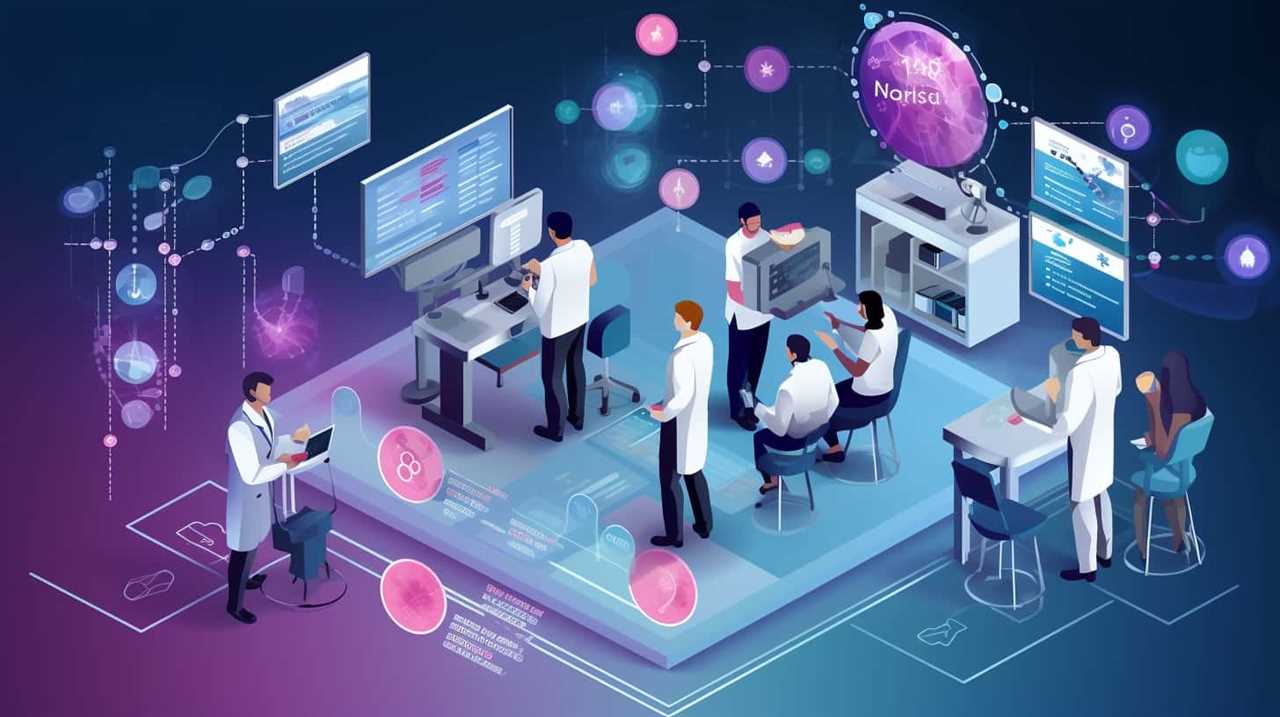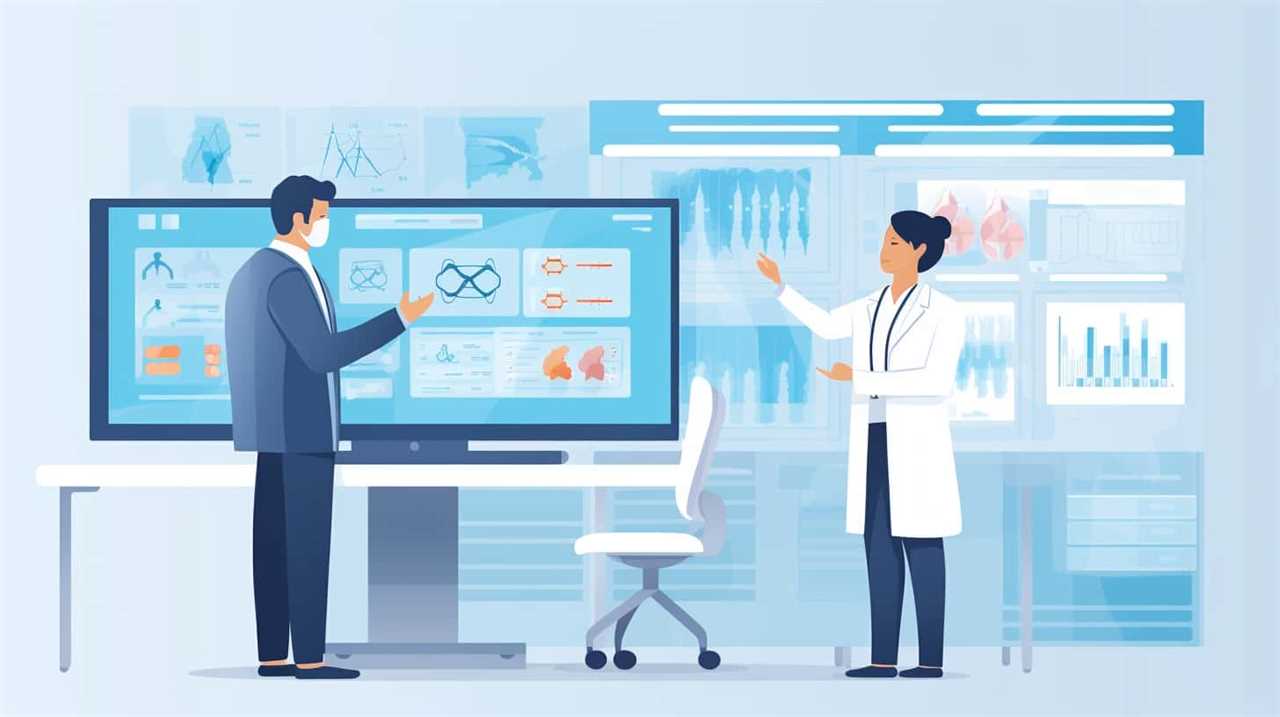As someone constantly seeking ways to enhance productivity, I have been closely following the advancements in AI technology and its potential influence on the workplace.
Jamie Dimon’s recent prediction of a 3½-day workweek caught my attention. In an era where AI is embraced by industries, Dimon’s vision raises important questions about the future.
This article explores the implications, benefits, and challenges of AI revolution, examining its role in the workplace, impact on jobs, and the possibility of a shorter workweek.
Join me on this journey as we navigate the exciting possibilities and potential pitfalls of an AI-driven work-life balance.

Key Takeaways
- AI is already being used by thousands of employees at JPMorgan Chase, indicating the company’s investment and belief in its value.
- The impact of AI on jobs is significant, with as many as 300 million jobs worldwide potentially being affected by AI.
- The potential for a shortened workweek is seen as a benefit of AI, with Jamie Dimon predicting a future where people may work 3½ days a week.
- Dimon has been critical of remote and hybrid work arrangements, believing that leaders need to be accessible to their teams, leading to JPMorgan Chase’s return-to-office policy.
Benefits of AI in the Workplace
AI offers numerous benefits in the workplace. Ethically, AI can help eliminate bias and discrimination in decision-making processes by relying on objective data and algorithms. This can lead to fairer hiring practices and promotions, fostering a more inclusive work environment.
Additionally, AI can enhance employee training by providing personalized and interactive learning experiences. Through machine learning algorithms, AI can analyze individual learning patterns and tailor training programs accordingly, ensuring maximum effectiveness and engagement.
Moreover, AI can automate repetitive tasks, freeing up employees to focus on more strategic and creative work. This not only increases productivity but also allows individuals to develop new skills and take on more challenging responsibilities.
Impact of AI on Jobs
My observation of the impact of AI on jobs is that it has the potential to reshape the workforce. As technology continues to advance, AI is becoming more prevalent in various industries, including the gig economy and the education sector. The table below provides a glimpse into the current and future impact of AI on jobs:

| AI in the Gig Economy | AI and the Future of Education |
|---|---|
| – AI-powered platforms are transforming the gig economy by connecting workers with job opportunities. | – AI has the potential to personalize education by adapting to individual learning styles. |
| – AI algorithms match freelancers with clients, streamlining the hiring process. | – AI can automate administrative tasks, freeing up teachers’ time for personalized instruction. |
| – Gig workers can benefit from AI’s ability to analyze data and provide insights for better decision-making. | – AI can provide virtual tutoring and mentoring, expanding access to education. |
The integration of AI into the gig economy and education sector has the potential to create new job opportunities while also transforming existing roles. It is crucial for individuals to adapt and acquire the necessary skills to thrive in this evolving landscape.
Potential for a Shortened Workweek
As technology continues to advance, the potential for a shortened workweek becomes increasingly feasible, offering employees the opportunity to work fewer hours while maintaining productivity levels.
AI-driven productivity has the potential to revolutionize the way we work, allowing tasks to be completed more efficiently and effectively. This increased efficiency can lead to a better work-life balance for employees, allowing them to have more time for personal pursuits and family.
Additionally, AI’s impact on job satisfaction and employee morale can’t be overlooked. With the reduction in workload, employees may feel less overwhelmed and stressed, leading to increased job satisfaction and overall happiness in the workplace.

However, it’s important to consider the potential challenges that may arise with a shortened workweek, such as potential job displacement and the need for retraining and upskilling to adapt to the changing work environment.
Dimon’s Stance on Remote Work
Dimon’s stance on remote work aligns with his belief that leaders need to be accessible to their teams. Despite the increasing popularity and effectiveness of remote work arrangements, Dimon has been a critic of this trend.
He acknowledges that remote work can be suitable for certain roles, such as coding, research, and caregiving. However, he argues that it doesn’t apply to all positions, especially leadership roles. Dimon believes that leaders should be physically present in the office to foster collaboration, mentorship, and effective communication with their teams.
His criticism of remote work stems from the concern that it may hinder the accessibility and availability of leaders to their employees. JPMorgan Chase’s return-to-office policy, which requires managing directors to work from the office five days a week, reflects Dimon’s belief in the importance of leaders being completely accessible to their teams.

Jpmorgan Chase’s Return-To-Office Policy
I support JPMorgan Chase’s return-to-office policy.
The return to office implementation is a strategic move that aims to ensure leaders are accessible to their teams. While remote work accessibility has its benefits, there are certain roles, especially leadership positions, that require in-person interaction for effective communication and decision-making.
JPMorgan Chase recognizes the importance of face-to-face collaboration and believes that leaders need to be completely accessible to their people. By gradually implementing the return-to-office campaign over the next few years, the company allows for a smooth transition and provides employees with the necessary time to adjust.
It’s crucial to strike a balance between remote work flexibility and maintaining a strong office culture. JPMorgan Chase’s return-to-office policy aligns with this objective and supports the overall productivity and effectiveness of the organization.

AI Already Used by Jpmorgan Chase
JPMorgan Chase leverages AI technology across various functions within the company. The implementation of AI has brought significant benefits, but it has also come with its fair share of challenges. One of the main challenges is ensuring that the AI systems are accurate and reliable. This requires a constant effort to train and fine-tune the algorithms to ensure they deliver accurate results. Additionally, there is a need to address any potential bias in the AI systems to ensure fairness and avoid discriminatory outcomes. Looking ahead, there are exciting future advancements on the horizon. JPMorgan Chase is actively exploring ways to enhance their AI capabilities, such as leveraging natural language processing and machine learning to improve customer service and automate repetitive tasks. The potential for AI to revolutionize the way we work is immense, and JPMorgan Chase is at the forefront of embracing this technology.
| Implementation challenges | Future advancements |
|---|---|
| Ensuring accuracy and reliability of AI systems | Enhancing AI capabilities with natural language processing and machine learning |
| Addressing potential bias in AI systems | Automating repetitive tasks and improving customer service |
| Training and fine-tuning AI algorithms | Exploring new applications and use cases for AI |
AI Investments Add Value to the Company
AI investments have significantly increased the value of the company. Here are four key points to consider:
- ROI and long-term benefits: JPMorgan Chase’s investments in AI have proven to be financially rewarding. The use of AI technology has improved efficiency and productivity, resulting in cost savings and higher profits. These long-term benefits demonstrate the value of AI investments in the workplace.
- Enhancing customer experience and satisfaction: AI plays a crucial role in enhancing customer experience. By leveraging AI, JPMorgan Chase can provide personalized and efficient services to its customers. AI-powered chatbots, for example, can quickly address customer queries and resolve issues, leading to higher customer satisfaction levels.
- Improved decision-making: AI algorithms can analyze vast amounts of data and provide valuable insights for decision-making. This helps JPMorgan Chase make more informed business decisions, leading to better outcomes and increased competitiveness.
- Competitive advantage: AI investments give JPMorgan Chase a competitive edge in the industry. By harnessing the power of AI, the company can stay ahead of the curve, adapt to changing market dynamics, and deliver innovative solutions to its customers. This positions JPMorgan Chase as a leader in the financial services sector and adds significant value to the company.
Leveraging AI Across Various Functions
Leveraging the capabilities of artificial intelligence across various functions has proven to be a game-changer in maximizing efficiency and productivity. However, the implementation of AI comes with its own set of challenges. One major challenge is ensuring that the AI systems are properly trained and optimized to perform their designated tasks accurately. Additionally, organizations need to address concerns regarding data privacy and security when integrating AI into their operations.
On the other hand, AI has a significant impact on job satisfaction. By automating repetitive and mundane tasks, AI allows employees to focus on more meaningful and strategic work. This can lead to increased job satisfaction as individuals are empowered to use their skills and expertise in a more fulfilling manner. Moreover, AI can provide employees with real-time insights and recommendations, enabling them to make better decisions and improve their overall performance.

Ai’s Potential to Improve Labor Productivity
One major benefit of AI in the workplace is its potential to significantly improve labor productivity. Here are four ways AI can enhance workplace efficiency and positively impact employee well-being:
- Streamlining repetitive tasks: AI can automate mundane and time-consuming tasks, freeing up employees to focus on more critical and creative work.
- Enhancing decision-making: AI algorithms can analyze vast amounts of data, providing valuable insights that can inform decision-making processes and lead to more effective outcomes.
- Improving collaboration: AI-powered tools facilitate communication and collaboration, enabling teams to work more efficiently and seamlessly across different locations and time zones.
- Personalizing employee experiences: AI can tailor learning and development programs, recognition systems, and employee benefits to individual needs, enhancing employee satisfaction and overall well-being.
UncertAInty Surrounding the Impact of AI on Jobs
The potential impact of AI on jobs brings about uncertainty regarding its implications for the workforce. As technology continues to advance, there are concerns about the impact on job security and the future of work. According to a Goldman Sachs report, as many as 300 million jobs worldwide could be affected by AI.
This uncertainty is further highlighted by the fact that about 1 in 5 American workers have a job with high exposure to AI. It remains unclear whether AI will enhance or displace these roles. However, companies like JPMorgan Chase are taking steps to address this uncertainty by offering opportunities for displaced workers to be transferred to new locations and roles within the company.
As the future of work evolves, it’s crucial to navigate the uncertainties surrounding the impact of AI on jobs and ensure the workforce is adequately prepared for the changes that lie ahead.

Transferring Displaced Workers Within Jpmorgan Chase
Transferring displaced workers within JPMorgan Chase is an essential step in addressing the potential impact of AI on jobs. The company recognizes the importance of supporting its employees during times of job displacement and understands the need for workforce restructuring. Here are four key points to consider:
- Retaining talent: By transferring displaced workers to new locations and roles within the company, JPMorgan Chase can retain valuable employees who’ve already demonstrated their skills and expertise.
- Minimizing disruption: Transferring workers within the organization helps minimize the disruption caused by job displacement. It allows employees to continue contributing to the company while adapting to new roles and responsibilities.
- Leveraging existing knowledge: By transferring workers within JPMorgan Chase, the company can leverage the knowledge and experience gained by employees in their previous roles. This ensures that valuable institutional knowledge isn’t lost during the workforce restructuring process.
- Promoting employee morale: Offering opportunities for internal transfers can boost employee morale and engagement. It shows that JPMorgan Chase values its employees and is committed to supporting their career growth and development, even in challenging times.
Through transferring displaced workers within the organization, JPMorgan Chase demonstrates its commitment to mitigating the potential impact of AI on jobs and supporting its workforce during times of change.
Dimon’s Prediction of a 3½-Day Workweek
Predicting a 3½-day workweek, Dimon foresees a shift in the future of work due to advancements in AI. According to Dimon’s workweek prediction, the impact of AI on work-life balance could be significant.
As AI technology continues to advance, it has the potential to increase productivity and efficiency in the workplace. This increased efficiency could result in shorter workweeks, allowing employees to have more time for personal activities and leisure.

Dimon’s prediction aligns with the belief that technology will continue to evolve and reshape the way we work. However, it’s important to consider that a shorter workweek may not be feasible or suitable for all industries or job roles.
It will be crucial to strike a balance between leveraging AI’s capabilities and ensuring that employees’ well-being and productivity aren’t compromised.
Frequently Asked Questions
How Does Remote Work Apply to Coding, Research, and Caregiving Roles?
Remote work can be highly applicable to coding, research, and caregiving roles.
In coding, remote collaboration allows for efficient code sharing and real-time collaboration, which can enhance productivity.

For research, remote work enables access to a global talent pool and facilitates collaboration with experts from different locations.
In caregiving roles, remote work can provide flexibility for caregivers to work from home while still attending to their responsibilities.
What Are the Specific Roles That Are Exempt From Jpmorgan Chase’s Return-To-Office Policy?
Exempt roles from JPMorgan Chase’s return-to-office policy are those that can continue to work remotely. These roles may include coding, research, and caregiving positions, as remote work has proven to be effective in these areas.
However, it’s important to note that not all roles are suitable for remote work, especially leadership positions. JPMorgan Chase believes that leaders need to be accessible to their teams, which is why the return-to-office policy applies to managing directors and other leadership roles.

How Has Jpmorgan Chase Implemented Its Return-To-Office Campaign Over the Next Few Years?
JPMorgan Chase has implemented its return-to-office campaign gradually over the next few years. The campaign aims to ensure leaders are accessible to their teams, reflecting Jamie Dimon’s belief.
While the return-to-office policy doesn’t apply to all roles, some jobs can continue to work remotely. This implementation aligns with the company’s use of AI technology, which has already added significant value and efficiency.
As AI continues to advance, it may further support JPMorgan Chase’s potential for a shortened workweek.
What Are Some Examples of the Functions Across Jpmorgan Chase That Leverage AI Technology?
One example of a function across JPMorgan Chase that leverages AI technology is customer service. AI-powered chatbots are used to provide automated assistance and support to customers, helping to streamline processes and improve efficiency.

These chatbots can handle a wide range of customer inquiries and provide quick and accurate responses, reducing the need for human intervention.
This application of AI in customer service showcases the potential of AI advancements in enhancing the customer experience and optimizing operational workflows.
How Does AI Technology Have the Potential to Boost Global GDP by as Much as 7%?
AI technology has the potential to boost global GDP by as much as 7% through various means.
Firstly, AI can improve labor productivity by automating repetitive tasks, allowing workers to focus on more complex and value-added activities. This increased productivity can lead to higher economic output and growth.

Additionally, AI can help reduce income inequality by creating new job opportunities and enhancing workers’ skills.
However, it’s important to manage the potential job displacement caused by AI to ensure a smooth transition and minimize any negative impacts on workers.
Conclusion
In conclusion, Jamie Dimon’s prediction of a future with a 3½-day workweek raises thought-provoking questions about the impact of AI on our working lives.
According to a study by Oxford Economics, it’s estimated that by 2030, automation and AI could displace up to 20 million manufacturing jobs worldwide. This statistic highlights the urgency of addressing the potential challenges and ensuring a smooth transition in the workplace.

As we embrace the exciting possibilities of AI, it’s crucial to prioritize retraining and reskilling programs to support and empower displaced workers.









